September 25th, 2024
Scandinavian and minimalistic design share similar principles yet exhibit distinct philosophies and aesthetics. Scandinavian design originated in Nordic countries and is known for emphasising simplicity, functionality, and natural elements in their designs.
Modern minimalism blends clean lines and functional design with cosiness and warmth, often employing light woods, neutral colour palettes and the Danish concept of hygge (comfort and well-being).
Subtracting unnecessary elements, the minimalist design focuses on stripping back elements to their essentials with a “less is more” philosophy in mind. It often employs monochromatic colour schemes and minimalist ornamentation techniques for an air of spaciousness and calm.
Although both styles prioritise simplicity and uncluttered spaces, the Scandinavian design includes warmth and cosiness, while minimalistic design adheres to a more austere aesthetic. Understanding these subtle distinctions will assist in selecting an approach best suited to your space.
This blog post highlights the key differences between the two designs.
8 Key Differences Between Scandinavian Design and Minimalist Design
1. Historical and Cultural Roots
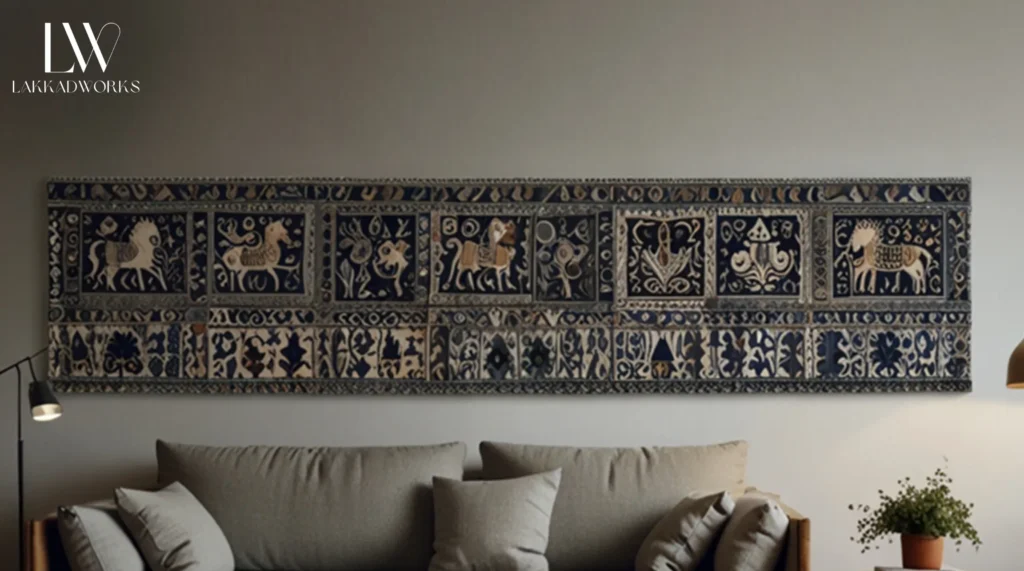
Scandinavian design emerges from its culturally rich source countries of Denmark, Sweden, Norway, Finland and Iceland and represents their emphasis on simple forms, functionality and nature-inspired materials.
Traditionalism forms the cornerstone of Scandinavian design, often featuring elements inspired by regional natural landscapes and climate. This design style embraces “hygge,” or the Danish concept of comfortable cosiness and well-being.
Scandinavian interior design is heavily influenced by the practical needs of daily life in these countries, where practicality and durability are of utmost importance due to the harsh climate conditions.
The minimalistic design draws its inspiration from modernist thought, emphasising “less is more.” First popularised during the mid-20th century, minimalistic design seeks to reduce visual clutter and prioritise form over function, often disregarding cultural or historical context for its design principles.
2. Aesthetic Warmth
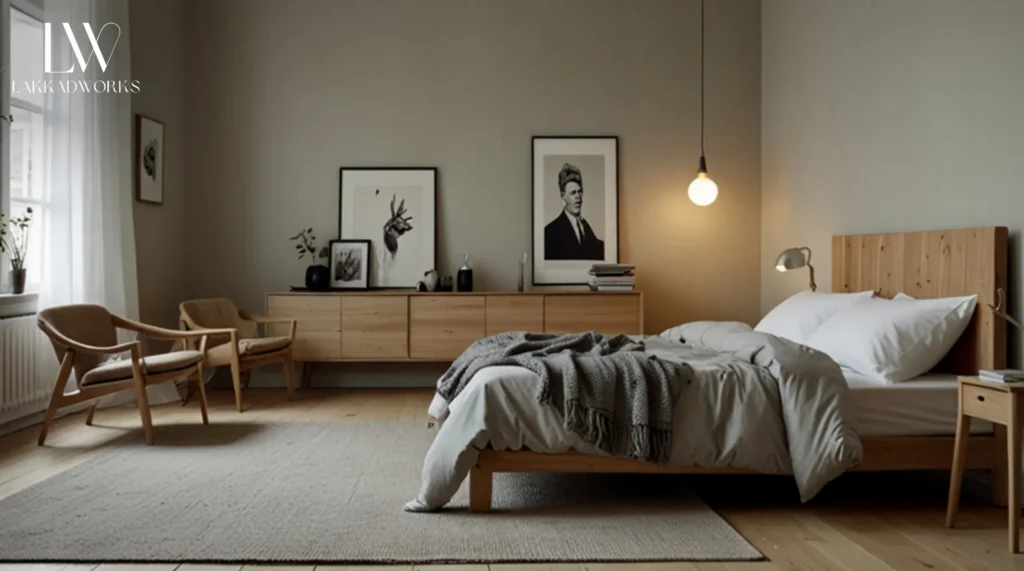
Scandinavian design is well known for its emphasis on warmth and cosiness, achieved through light wood, soft textiles and inviting colour palettes.
Aesthetic features often contribute to an overall sense of comfort and well-being in spaces, creating a homely and inviting feeling. Birch and pine wood, plush rugs and throws, are typical elements that bring cosiness to a room.
Conversely, minimalistic living room interior design employs an austere and stripped-back aesthetic focused on minimalism and clarity.
Minimalism encourages the concept of ‘less is more’, with emphasis placed on clean lines, open spaces and no ornamentation, creating an environment which may feel clinical and distant compared to Scandinavian living room interior design, which often exude warmth and welcome.
3. Colour Palette
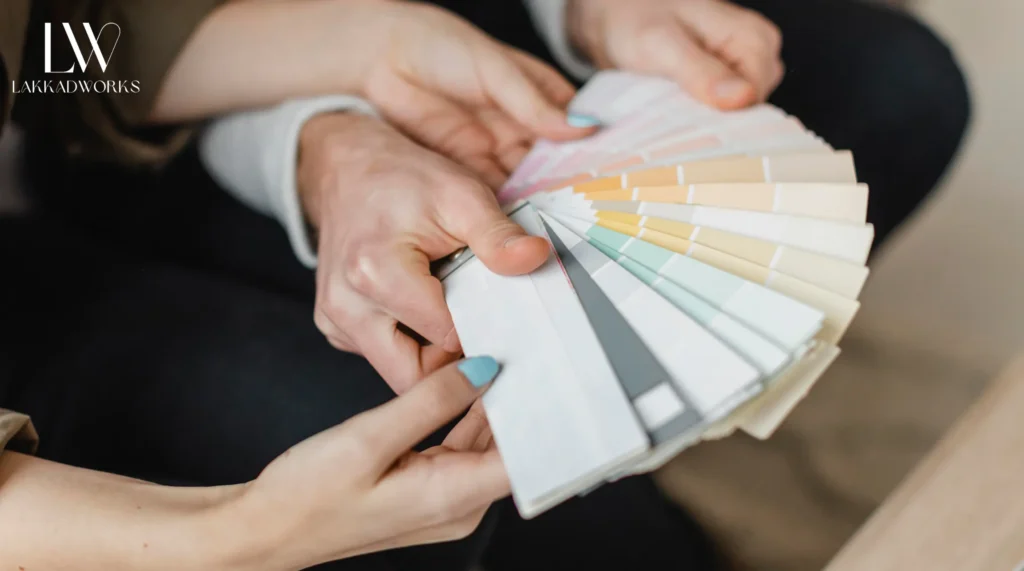
The Scandinavian interior design employs a neutral colour palette consisting of whites, greys and earthy tones to create an airy and relaxing space.
This palette can be enhanced with subtle touches of colour added by accessories, artwork or textiles to add character without dominating the living room design.
The goal is to reflect natural light and foster feelings of openness and tranquility in each space.
Minimalistic design features more subdued colour schemes, typically emphasising monochromatic shades like black, white and grey to achieve a clean, uncluttered aesthetic.
Colour usage tends to be limited. Minimalism emphasises visual clarity over warm tones like those seen in Scandinavian design.
4. Aesthetics and Function
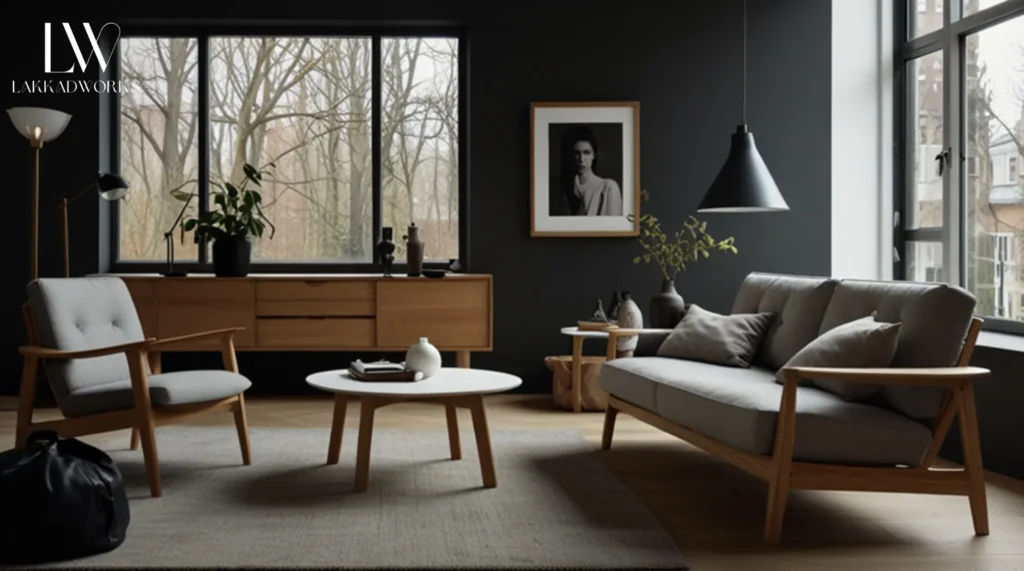
Scandinavian interior design places great emphasis on both aesthetic appeal and practical functionality in its furniture and decor choices.
Furniture pieces are selected not just for their visual qualities but also to improve daily life experiences. Pieces designed to fulfil multiple roles reflect the Scandinavian philosophy of combining beauty with daily usability in an ideal balance.
This practical approach speaks volumes. On the other hand, minimalistic living room design prioritises functionality but often at the expense of comfort.
Minimalistic interiors aim to reduce elements down to their core elements in order to limit practical aspects while at the same time minimising visual clutter – emphasising simplicity over multifunctionality or comfort.
5. Material Types
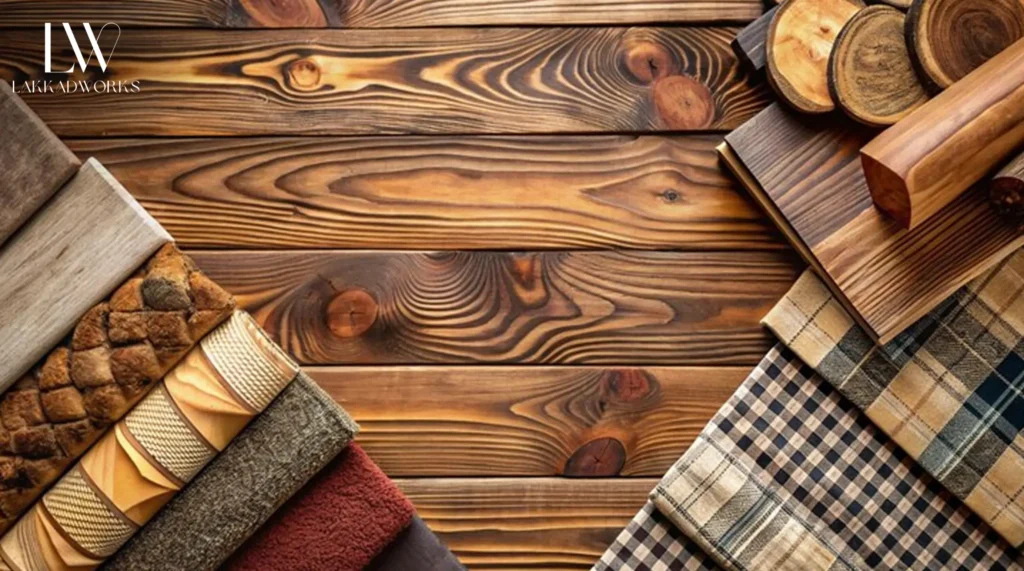
Scandinavian design often incorporates natural materials like light woods, wool and leather into its designs for their aesthetic qualities and to create a cosier and warmer environment.
These elements reflect Scandinavians’ deep connection to their environment. Natural textures and finishes add depth and character to a space, creating an inviting ambience.
Scandinavian interiors often showcase wooden furniture and accessories, which showcase its beautiful grain patterning and craftsmanship.
On the other hand, minimalistic design tends to focus more on industrial finishes and modern textures; sleek surfaces with reduced natural textures help achieve an uncluttered appearance that highlights minimalism’s focus on simplicity and function.
6. Design Philosophy
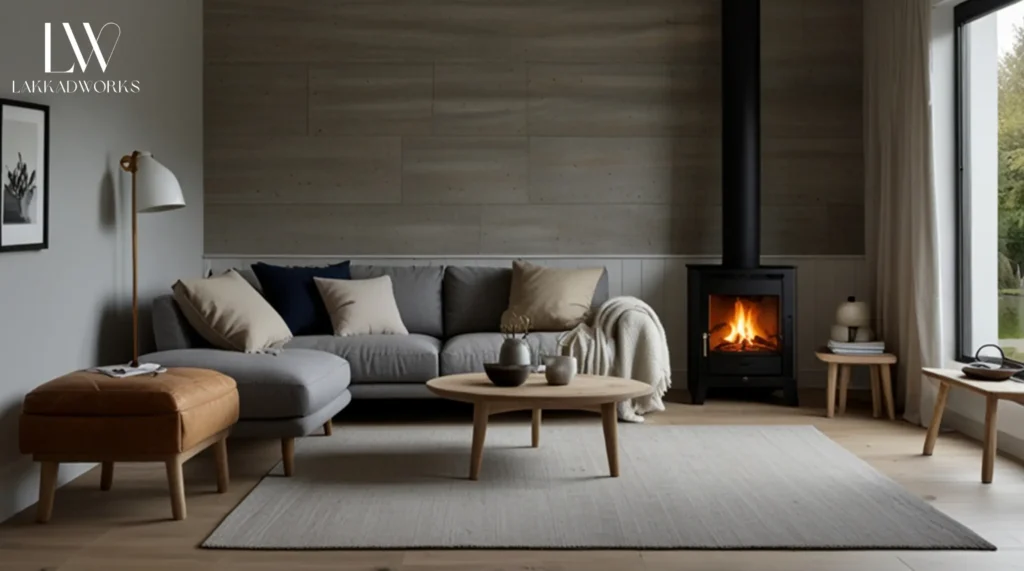
Scandinavian design centres around the concept of “hygge,” which advocates creating an inviting space that fosters well-being and relaxation.
Scandinavian interior design integrates functional design with emotional comfort, creating spaces that are not only aesthetically pleasing but also emotionally fulfilling.
Scandinavian interiors tend to balance practicality with warmth and personalisation for maximum satisfaction. However, minimalistic design prioritises visual simplicity and order over emotional warmth and comfort.
The goal of minimalistic design is to achieve an uncluttered living room interior design look by eliminating extra elements or distractions; although its aim may be met successfully through minimalist design’s promotion of calmness and tranquillity.
Scandinavian design often achieves this through textures, materials and colours that add emotional warmth and cosiness that minimalistic does not.
7. Decor and Accessories
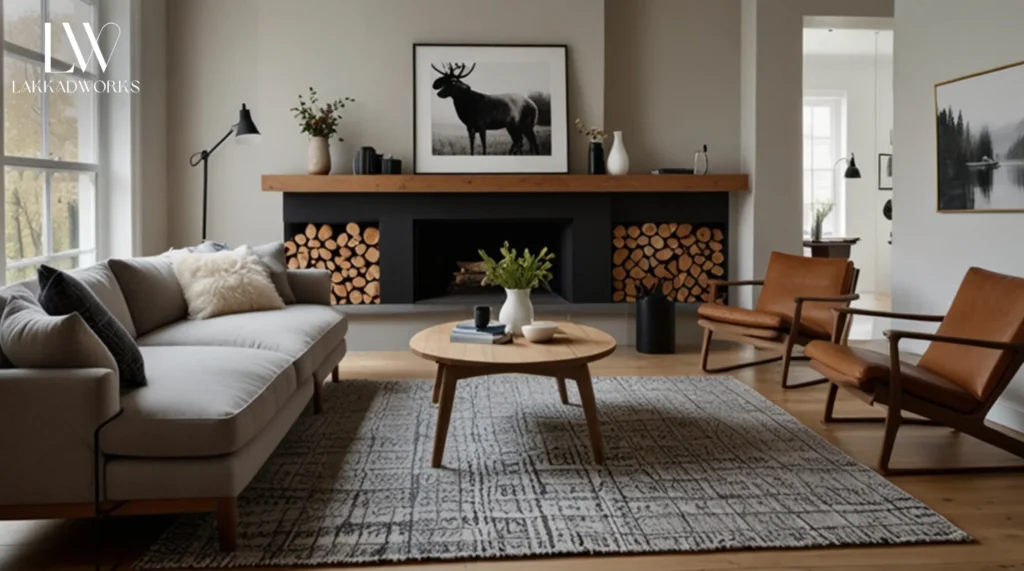
In Scandinavian design, decor and accessories play a critical role in adding warmth and character to a space. Items like patterned rugs, throw blankets and art pieces are carefully selected to add character and maintain harmony within a room’s aesthetic.
These accessories help bring colour and texture without overwhelming the space – creating an inviting environment in which guests feel at ease.
Minimalistic design typically favours essential items that serve a practical function rather than decorative ones that could add unnecessary visual clutter.
Minimalistic spaces often emphasise on functional pieces that blend harmoniously into their overall design rather than adding personal flair or warmth. This results in a more streamlined and orderly environment which prioritises simplicity over extra warmth or flair.
8. Spatial Layout and Lighting
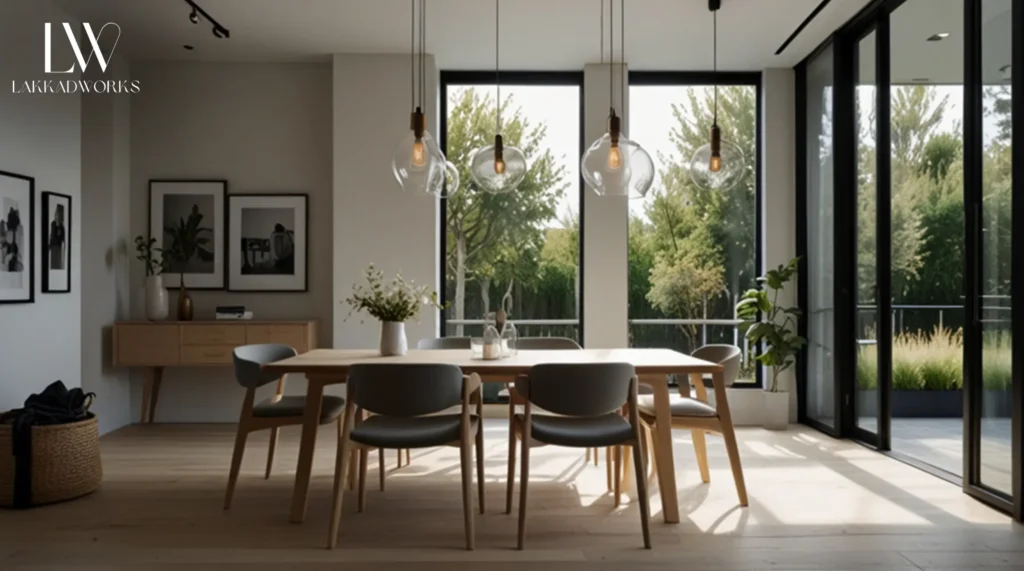
The Scandinavian design emphasises natural light by using light colours and reflective surfaces that maximise natural illumination. It also uses the large windows to bring more natural light into the space and strategically places lighting fixtures to add warmth and functionality to the room.
Layout often promotes an atmosphere of fluidity and openness to the outdoors, making spaces appear airy and expansive.
In contrast, minimalistic design takes advantage of natural lighting but emphasises creating uniform illumination across all spaces. Lighting in minimalistic design tends to be subtle and unobtrusive, emphasising functionality and clarity.
Spatial arrangements should create an open, uncluttered feel by including hidden storage solutions to minimise visual distractions. While both styles embrace light equally, Scandinavian design often incorporates it more dynamically for comfort and connection with nature.
Transform Your House into a Beautiful and Functional Residence!
Transform Your House into a Beautiful and Functional Residence!
Connect with Lakkadworks for the Best Interior Design Themes for Your Home
Conclusion While Scandinavian and minimalistic designs both share an emphasis on simplicity, each offers distinctive aesthetics and functionalities.
Scandinavian design blends warmth, natural elements and practicality into inviting spaces while minimalistic design emphasises stark simplicity and uncluttered elegance.
To find the ideal balance of these styles in your home, Lakkadworks‘ custom design solutions combine expert craftsmanship with deep knowledge of both styles for optimal results – guaranteeing you get precisely the space that meets your needs aesthetically yet functionally.
Connect with Lakkadworks to bring your vision to life while providing exceptional design quality.


